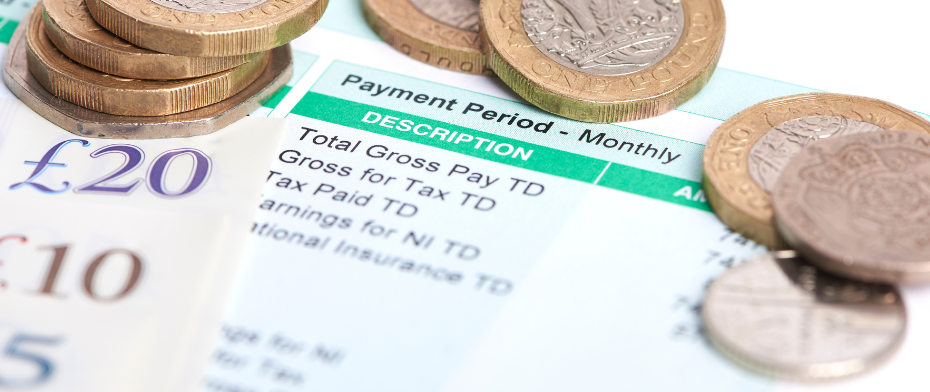Minimum Wage Increases, Second Home Stamp Duty Increases, and Capital Gains Tax Increases! What’s new in the Autumn Budget 2024?
- TBA

- Nov 1, 2024
- 5 min read
Updated: May 29
On the 30th October, the Chancellor of the Exchequer Rachel Reeves announced Labour’s first Autumn Budget since taking office earlier this year.
Reeves emphasised that Labour’s core goal is to revive the UK economy and boost investment. As anticipated, most of the budget is focused on tax increases, with many observers describing it as the largest tax hike budget in history. According to government projections, the new measures in the Autumn Budget are expected to raise £40 billion.
We’ve summarised the key points from the Autumn Budget so that you can see which policies could affect your finances.
Increase in Statutory Minimum Wage
Starting from April 2025, the statutory minimum wage for employees aged 21 and above will rise from £11.44 per hour to £12.21 per hour.
The government estimates that 3 million low-income workers in the UK will benefit, raising their standard of living. For full-time employees meeting this threshold, the 6.7% increase equates to £1,400 per year.
The minimum wage for young people aged 18 to 20 will also increase from £8.60 to £10.00 per hour, the largest-ever increase of £1.40, meaning that full-time young workers will earn £2,500 more next year.
Additionally, eligibility for full-time carer allowances will expand, raising the maximum income threshold from £151 to £195 per week.

Changes to Income Tax and National Insurance
Employees and consumers alike can expect a favourable outcome, as the Chancellor stated the government will not raise income tax, employee national insurance, or VAT rates.
However, from April next year, employer national insurance contributions will increase to 15%, and the threshold for employer national insurance contributions will be lowered. Employers will start paying national insurance for each employee from an annual income threshold of £5,000, down from £9,100.
The Employment Allowance will however increase from £5,000 to £10,500, which means 865,000 eligible employers will no longer pay national insurance.
Additionally, the freeze on income tax and national insurance thresholds will end in 2028, which will eventually prevent people from being pushed into higher tax brackets as wages rise. From the 2028/29 tax year, income tax thresholds will be adjusted based on inflation.
State Pension Increase
The government previously promised to maintain the triple-lock policy.
Rachel Reeves confirmed that the national pension will increase by 4.1% in April 2025 as per the triple-lock guarantee. The full new State Pension will therefore rise to £230.30 per week (£11,975 annually), while the full basic State Pension will increase to £176.45 per week (£9,175 annually).

Second Home Stamp Duty Increase
Landlords and those planning to purchase second homes may be disappointed by the Chancellor’s announcement.
Reeves confirmed that the government will raise the stamp duty surcharge for purchasing a second property from 3% to 5%, effective from the 31st October 2024. This measure aims to support first-time and primary homebuyers.
Capital Gains Tax Increase
The budget mentions that the lower rate of capital gains tax will rise from 10% to 18%, while the higher rate will increase from 20% to 24%.
For residential property, capital gains tax rates will remain at 18% and 24%. Reeves confirmed the continuation of the private residence relief policy, which exempts primary residences from capital gains tax.

Inheritance Tax Reform
The previous Conservative government froze the inheritance tax threshold until 2028.
The Labour government announced it would extend this freeze by another two years, until 2030. This means that estates up to £325,000 can be inherited tax-free, while estates with a residence passed to direct descendants can benefit from a £500,000 exemption, increasing to £1 million if transferred to a surviving spouse or partner.
From April 2027, inherited pensions will be subject to inheritance tax for the first time. The government will also reform agricultural and business property relief: the first £1 million in assets will remain exempt, but assets exceeding this will receive a 50% relief, meaning a 20% effective tax rate.
Alternative investment markets and similar stocks will also see a 50% inheritance tax relief at an effective tax rate of 20%.
Overall, these changes are expected to raise over £2 billion by the end of the forecast period.
Business Measures
The retail, hospitality, and leisure sectors will be eligible for a 40% reduction in business rates, with a cap of £110,000 per business. The lifetime limit for entrepreneurs’ relief on business asset disposal remains at £1 million to encourage investment in businesses.
The disposal relief rate will remain at 10% this year, rising to 14% in April 2025 and 18% by 2026-27. Overall, these changes are expected to raise £2.5 billion. From 2026-27, the Treasury plans to introduce two permanently lower tax rates for retail, hospitality, and leisure properties.
Notably, from April 2025, the UK government will formally move ahead with plans to abolish the non-domicile tax regime, which allowed UK residents with foreign domiciles to avoid UK tax on overseas earnings. The Chancellor announced a new, residency-based scheme for temporary UK residents to make the UK more competitive internationally, though specific details were not provided.
According to the Office for Budget Responsibility, these measures are expected to raise £12.7 billion over the next five years.

Other Key Changes
VAT on Private Schools
From the 1st January 2025, VAT will apply to all education, training, and boarding services provided by private schools. The funds raised will support greater investment in public education, raising standards and creating more opportunities for all.
Fuel Tax Freeze
With high living costs and global uncertainties potentially causing fuel price fluctuations, the government has decided to freeze fuel tax from next year and extend the 5p per litre reduction for another year. This means the average driver will save £59 in the 2025/26 tax year, and fuel station charges will remain stable next year.
Tobacco and Alcohol Tax
From the 1st October 2026, the UK government will impose a uniform tax rate on e-cigarettes, and tobacco taxes will increase. Taxes on non-cask alcoholic beverages will rise with the retail price index, while taxes on cask beverages will decrease by 1.7%.
Airline and Private Jet Taxes
Air Passenger Duty for short-haul economy flights will increase by up to £2, and an additional 50% will be applied to private jet taxes, with a maximum of £450 per passenger per flight.
Bus Fare Cap
The single-trip bus fare cap on several routes in England will rise from £2 to £3.
Carer Allowance
Currently, carers claiming benefits can earn up to £151 per week before facing deductions. This threshold will increase to £195 per week (or £10,000 annually), allowing carers to earn £45 more per week without losing any benefits.

Housing and Infrastructure
The budget introduced new policies related to housing and infrastructure investment. For the new tax year, the government will provide £1 billion to speed up the removal of dangerous cladding on residential buildings. Local governments will retain revenue from social housing sales to reinvest in both existing stock as well as new supply.
The Chancellor announced the opening of the TransPennine route connecting York, Leeds, Huddersfield, and Manchester, promising fully electric local and regional services between Manchester and Stalybridge by the end of the year. The East-West Rail route will also be launched to foster growth between Oxford, Milton Keynes, and Cambridge.
Funds have also been allocated towards HS2 to commence tunnelling from Old Oak Common to Euston in London. Without the tunnelling extension, passengers using HS2 would have needed to switch trains at the previously designated Old Oak Common terminus for onward travel to central London.
For road maintenance, an additional £500 million has been allocated next year to meet the commitment of filling 1 million potholes annually.
For individuals and businesses looking for UK taxation services, use our contact form to get in touch for more information.
Get in touch with us at info@tbgroupuk.com or for a free one-to-one consultation.


